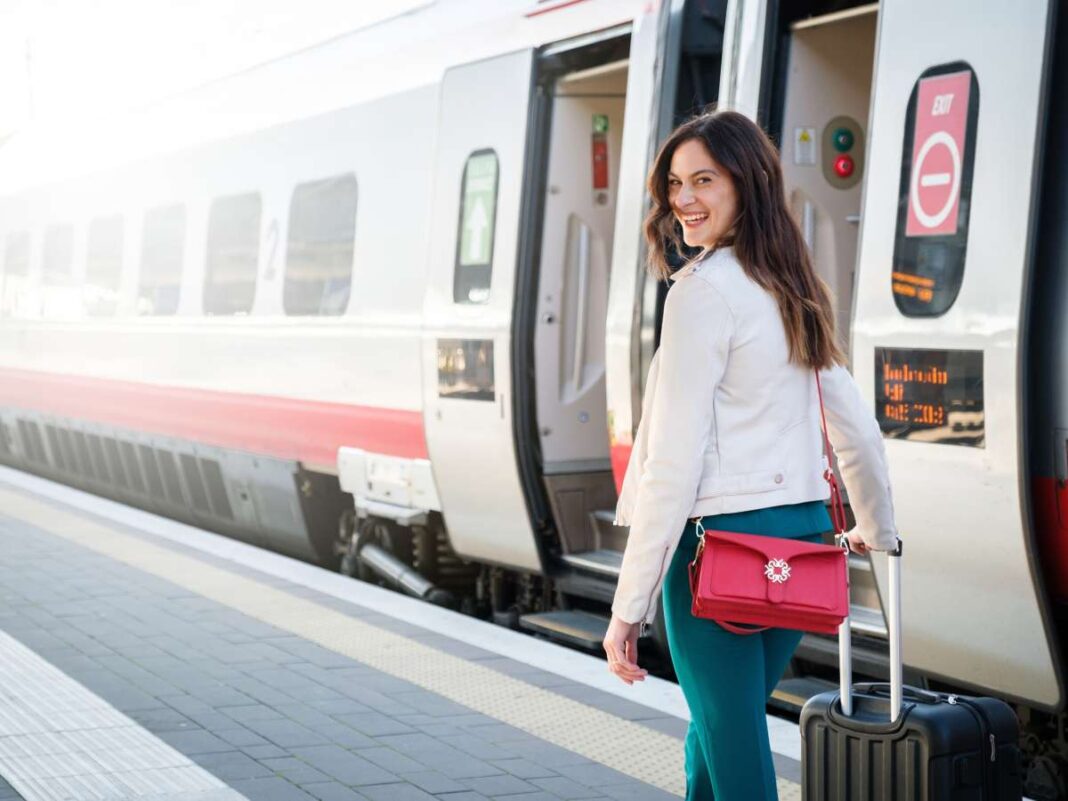In recent years, a growing number of travelers have been opting for train journeys over air travel. A combination of factors are driving this shift, including cost, comfort, environmental concerns, and a desire for a more relaxed travel experience.
Why Travelers Are Choosing Trains Over Flights
Cost and Affordability
For many, the decision to choose trains over planes comes down to cost. In several cases, traveling by train can be more affordable than flying. For instance, when traveling from Boston to New York City, the price difference is significant. While a flight might cost around $79 one way—including base fare and additional fees for carry-on luggage—a coach seat on Amtrak costs just $21 with free carry-on baggage allowed.
Comfort and Convenience
Train travel offers a level of comfort that is often lacking in economy class flights. Amtrak’s coach seats are spacious, providing ample legroom, and there are no middle seats to contend with. Travelers can relax from the moment they board, eliminating the stress of long lines and stringent security checks.
Moreover, train stations are typically located in city centers, making them more accessible than airports situated on city outskirts. This central location was cited by 49% of business travelers as a primary reason for preferring trains over planes, according to a BCD Travel survey.
Productivity and Remote Work
With the rise of remote and hybrid work, travelers are increasingly valuing the ability to remain productive during their journeys. Trains offer a conducive environment for work, with amenities like spacious seating and reliable onboard Wi-Fi. Over 80% of business travelers work while traveling by train, a convenience that is often lacking in air travel.
Environmental Considerations
Environmental consciousness is a major factor influencing the shift toward train travel, especially among Millennials and Gen Z travelers. Transportation accounts for 28% of U.S. greenhouse gas emissions, with flying and driving making up 89% of these emissions. Trains, on the other hand, are a far more eco-friendly travel option, emitting significantly fewer greenhouse gases than airplanes or cars.
According to Aaron McCall from California Environmental Voters, the reduction in greenhouse gases is linked to investments in green technology and public transportation. This environmental benefit resonates strongly with younger travelers who prioritize sustainability in their travel choices.
Frustrations with Air Travel
Air travel has become increasingly fraught with challenges such as rising ticket prices, service disruptions, and safety concerns. High-profile incidents and the uncertainty in air travel have pushed travelers to seek alternatives. The cramped seating, extensive security procedures, and additional fees associated with flying contribute to a less pleasant experience compared to the comfort and ease of train travel.
Unique Travel Experiences
Train journeys offer unique experiences that flights cannot match. Travelers can enjoy scenic routes, witness changing landscapes, and immerse themselves in the journey. For example, routes like the “Sunset Limited” from New Orleans to Los Angeles provide breathtaking views of small towns and natural scenery. Such journeys allow travelers to enjoy the ride as part of their vacation rather than just a means to reach a destination.
Additional Perks
Train travel comes with additional benefits that enhance the travel experience. Amtrak allows passengers to bring along bicycles and small pets, making it easier to explore destinations upon arrival and accommodating for travelers with pets.
Challenges and Limitations
Despite the numerous advantages, train travel does face challenges. Longer travel times compared to flights can be a deterrent for some travelers, especially on long-distance routes where Amtrak struggles with reliability and scheduling issues. Additionally, the U.S. rail system is not as extensive as those in Europe or Japan, limiting options in some regions.
The Future of Train Travel
Investments in infrastructure and technology signal a promising future for train travel. Amtrak plans to double its ridership by 2040, investing over $5 million in enhancing tunnels, train stations, and bridges. Innovations in zero-emission technologies like electrified rail and green hydrogen fuel promise further environmental benefits.
Private companies like Lunatrain are also stepping in to meet the demand by redefining long-distance rail travel. Their mission is to deliver comfortable, convenient, and affordable travel options that cater to modern travelers’ needs.
Conclusion
The shift toward train travel reflects a combination of practical considerations and a changing mindset among travelers. With cost savings, enhanced comfort, environmental benefits, and a more enjoyable travel experience, it’s clear why more people are choosing trains over planes. As investments continue to improve rail infrastructure and services, train travel is set to become an even more appealing option for travelers seeking alternatives to air travel.
